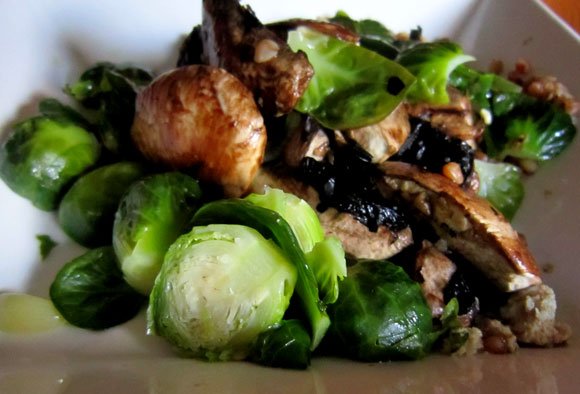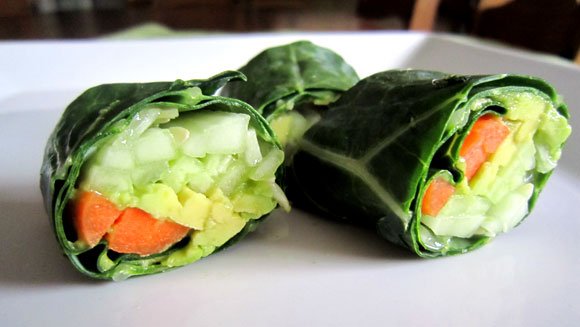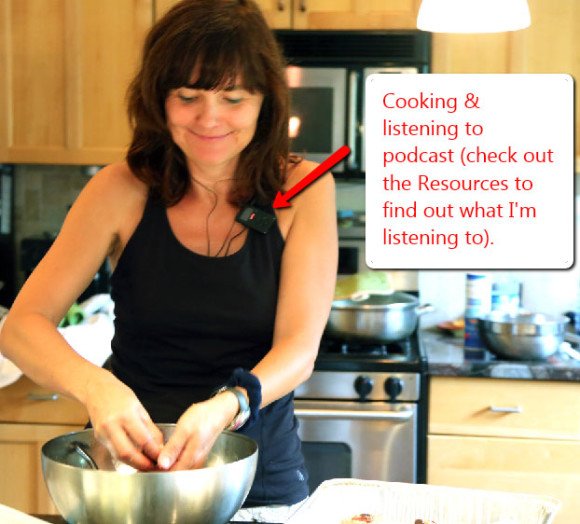by Joanna | Side Dishes
Perfect basmati rice will have separate fluffy rice grains, without any rice that is undercooked or overcooked. Basmati rice is different from many other types of rice in that it is drier; for example, it is drier than sushi rice.
Use a Rice Cooker to Make the Perfect Basmati Rice
Fuzzy logic rice cookers are an excellent way to make perfect basmati rice almost every time. You need to be careful to put the right amount of water in the cooker for the amount of rice you are making. Before cooking the rice, don’t forget to rinse it. For truly fluffy rice, soak the rice in cool water for 20 minutes before putting it in the rice cooker. You can add dried spices to the rice before cooking it for a rich flavor.
For basmati rice, you will need at least one and a half cups of water per cup of rice. You also need to select the right cooking setting. For basmati rice of the Asian style, use the white rice setting. For crunchier basmati rice, soak the rice in salt water for 20 minutes with at least one tea spoon of rice per cup of water, and then cook it on a harder menu selection. However, for the best results when cooking basmati rice in a rice cooker, do not add lentils to the rice before cooking it. Instead, cook the lentils separately and add to the final dish.
Proper Technique on the Stovetop Cooking of Basmati Rice
If you are cooking rice on a stovetop, set a pot full of water a burner set to medium heat. Let the rice soak in cold water for about 20 minutes before draining the rice. Wait until the rice hits a full boil before acting. Then set the burner to a simmer temperature. Put the rice into the pot, then put a lid on top of it. Set a timer for twenty minutes. Then let the rice cook. When the rice is cooking, be careful not to open the lid. This lets the steam and heat out and causes the rice to come out undercooked. When the timer goes off, immediately take off the lid and start fluffing the rice with a large spoon. Don’t press the rice down or against the side of the bill. At this point, you can add any spices, oil, sauces or butter.
Making Perfect Basmati Rice in the Microwave
Rinse the rice for 20 to 30 minutes in cold water. Pour the rinse water down a drain. Place the rice in one and a half cups of water for each cup of rice in a microwave safe bowl. Put the dish in the microwave, but leave the rice uncovered. Run the microwave on high for 15 minutes. You can stop the microwave before the fifteen minute mark if steam escaping from the rice is leaving holes in the rice. Then put a cover on the dish and run the microwave for another five minutes on high power. When the microwave is done, take the rice dish out. Set in on the counter with the lid still in place. Let the rice sit for five more minutes with the lid on, essentially simmering. Now take the lid off and fluff the rice with a spoon or fork. At this point, you can add spices, seasoning or sauces.
Most people stick to the same old boring white or brown rice, but you can add new types of any food to your menus without much fuss. Don’t be afraid to try basmati rice.

How to cook basmati rice (Photo: http://www.flickr.com/photos/cookbookman/6121427720/sizes/l/in/photostream/)
About the Author
Jennifer Bachman has been making gluten free foods for her family for over 3 years now. She uses her rice cooker almost daily for all sorts of easy one-pot healthy meals.
Questions? Comments? Suggestions?
If you have a favorite recipe, why not submit it here in the comment section of this smoothie recipes blog for others to enjoy too!
I also welcome any comments, questions and suggestions. Thanks!
by Joanna | Side Dishes
Brussels sprouts are related to cabbage, broccoli and kale, and they even look like miniature cabbages. Brussels sprouts, as other brassicas, contains sulforaphane, a chemical believed to have potent anticancer properties.
You might find that you have a certain feeling about Brussels sprouts. In fact, for most of you that feeling might be Ewwwwww!
If so, you may want to reconsider once you try these Brussel sprouts recipes.
Brussels sprouts are rich in many valuable nutrients. They are an excellent source of vitamin C and vitamin K. They are also loaded with vitamin A, folacin, potassium, calcium. They have 3-5 grams of fiber per cup, and at 25 calories per 1/2 cup cooked, they give us a reason to eat them more often. Brussels sprouts are one of those foods that will fill you up, without providing excessive calories.
Brussels sprouts are very high in fiber. They are also rather high in protein, accounting for more than a quarter of their calories.
Although hey are available year round; they are at their best from autumn through early spring when they are at the peak of their growing season.
Brussels Sprout Recipes
I don’t really love Brussels sprouts in green smoothies. You can try tossing one or two into the mix, but anything more than that, is too “cabbagy” to my taste.
Generally, vegetables such as Brussels sprouts, carrots, beets, broccoli, zucchini, daikon radish, cauliflower, cabbage, eggplant, pumpkin, squash, okra, peas, corn, green beans, and others do not combine well with fruit due to their high starch content.
Fortunately, Brussels sprouts are delicious as a raw salad or lightly cooked side dish.
Brussels Sprout Salad Recipe
You can make this salad any way you wish. Try pecans or pine nuts or almonds. You’ll be wanting to eat your sprouts. No kidding.
- 1 pound Brussels sprouts
- 4 ounces walnuts (or hazelnuts), broken into small pieces
- 2 apples, shredded
- 3-4 tablespoons fresh lemon juice
- 2 tablespoons of dried cranberries
- 1 tablespoon of maple syrup, agave or honey
- 2-3 big pinches of salt
- 2 medium cloves garlic, minced
Slice the Brussels sprouts on the slicing disc of the food processor. Alternatively, use a mandoline, or a knife. Ideally, you want the sprouts to be really thin.
In a large mixing bowl and toss gently with the maple syrup, lemon juice, salt, cranberries and nuts. Taste and adjust the seasoning, adding more lemon juice if needed. Add the cheese and toss once or twice to distribute it evenly throughout the salad.
Here is a delicious cooked dish with Brussels sprouts and mushrooms. I just had this dish last night with buckwheat (in the photo below), and it was delicious and very filling.
Brussels Sprouts and Mushrooms
The secret to tasty Brussels sprouts is to not overcook them. Overcooked Brussels sprouts have a pungent, sulfurous odor. Brussels sprouts that have been cooked “just right” have a crisp, dense texture and a slightly nutty taste.
Ingredients:
- 1 pound Brussels sprouts
- 1 small onion, quartered and thinly sliced
- 2-3 cloves garlic, thinly sliced
- 8 ounces mushrooms (baby bella, button, shitake, or portobello), sliced
- 3/4 cup water or vegetable broth
- 1 tablespoon of maple syrup, agave or honey
- a tablespoon of olive oil (optional)
- salt and pepper to taste
Wash the Brussels sprouts well. Cut off the brown ends and pull off any yellow outer leaves. Cut each sprout in half. Prepare the remaining vegetables and heat a non-stick skillet. You may use a tablespoon of olive oil, but for fat-free recipe we’ll use broth or water for cooking.
Put the onions and garlic into the hot non stick skillet. Stirring constantly, add a teaspoon or two of water or broth to the skillet if the onions stick, cook until the onions begin to brown, about 2-3 minutes. Remove onions and garlic to a plate and return the skillet to the heat.
Put the sprouts into the skillet, cut side down. Add maple syrup and cook until they begin to brown. Toss in the mushrooms and cook for another minute or two, stirring frequently. Add about 1/2 cup liquid and the reserved onions, stir, turn down the heat, and cover tightly. Cook until the sprouts are tender and easily pierced with a fork, 3-5 minutes, adding more broth if necessary. Season with salt and pepper to taste and serve immediately.

Brussels sprouts, mushrooms with buckwheat. The secret to tasty Brussels sprouts is to not overcook them.
Questions? Comments? Suggestions?
If you have a favorite recipe, why not submit it here in the comment section of this smoothie recipes blog for others to enjoy too!
I also welcome any comments, questions and suggestions. Thanks!
by Joanna | Side Dishes
Green smoothies is just one way to eat your greens. I love smoothies because they are easy and effortless, but don’t stop there. Get creative. Get fancy.
Why not use them in veggie wraps and veggie sushi rolls.
Why Veggie Sushi?
Sushi is all the rage these days, and vegan sushi is certainly nothing new.
If you love sushi, like many people do, you may wonder, Why vegetable sushi? Why not just have the real thing.
All of us heard about the benefits of eating fish, especially for their Omega-3 content. Plenty of publications have been written about the wonders of fish and fish oil – not to mention the various brands of dietary supplements that are now available in every health food store and pharmacy.
So, why veggie sushi? Well, aside the fact that this is a veggie-centered site, there are some important reasons why I’m going to try to convince you to skip the fish in your sushi.
One is health risks due to rising fish toxicity. Fish is one of the most polluted foods we eat, and it may place you at increased risks for various cancers. Due to increasing pollution, fish may contain significant levels of methylmercury, polychlorinated biphenyls (PCBs), dioxins, and other environmental contaminants. On top of that, if you are eating fish to get Omega-3s, you need to know that farm raised fish is usually fed artificial diet and as a result no longer contains the Omega-3s that you wanted.
The second reason to skip the fish is the collapse of entire marine ecosystems due to overfishing. What few people know about is that approximately 90% of the ocean’s fish have disappeared in the recent years. That’s right, a decline of 90% of the population of many marine species – especially the large fish species, such as sharks, tuna, and other – has been well documented.
Global fisheries are collapsing. Just as an example, millions of sharks and rays are discarded as “by-catch” each year. An estimated 300,00 dolphins, porpoises, and whales also die as by-catch each year, as they are unable to escape when caught in nets or drift-lines. Fish and other sea creatures are intelligent, sensitive animals who suffer terribly when caught in fishing nets.
For every pound of seafood that ends up on market, over 10 pounds may be thrown away as by-catch.
So what’s a health-conscious person to do, who is also compassionate and cares about the environment?
What most people don’t realize is that no fish actually makes omega 3 fatty acids themselves. And, therein lies the biggest fallacy of all. Omega 3 fatty acids are found in microalgae or plants, which every fish has to eat in order to obtain them.
Since not one fish produces Omega-3s on their own, why not just go to the source. Plant sources of Omega-3s include nuts, seeds, and beans, such as flaxseed, walnuts; soybeans; green vegetables; as well as algae, like spirulina or chlorella. The algae supplements are grown in clean environment, so they don’t contain toxic pollutants.
Veggie Sushi Wraps
OK, back to veggie sushi rolls.
They are a fun dish to prepare with your kids, which makes them more likely to eat their veggies.
So, get your veggies and a sharp knife and you’ll have an impressive-looking appetizer that is easy to put together in minutes!
Veggie Sushi Recipe
Ingredients
Veggie Sushi Recipe
-
- 1 cucumber or raw zucchini, thinly sliced
-
- 1 red bell pepper, thinly sliced
-
- 1 large carrot, thinly sliced
-
- 1 tomato
-
- 1 avocado
-
- 1 fresh lemon
-
- 1 tablespoon (or more) of grated ginger root
-
- a few large collard green leaves, washed, deveined and dried really well (or untoasted nori sheets)
Other ingredients to experiment with:
Dulse flakes
Toasted sesame seeds
Alfalfa sprouts or other sprouts
Fresh cilantro, dill or other herbs
Fresh fruit, such as mango or pineapple, thinly sliced
Brown rice, basmati rice or quinoa
Cooked sweet potatoes
Tahini
Instructions
- Just as with smoothies, experiment with different ingredients that you may have in your kitchen. Collard greens work great, but if you don't have any, other leafy greens, such as cabbage leaves, may do the job.
- General rule is to add some juicy ingredients (e.g., tomato), creamy ingredients (avocado) and some crunchy ingredients (carrots).
- Cut the veggies (carrots, zucchini, bell peppers, tomatoes) into long strands using a knife or julienne slicer. (If you have time you can marinate the veggies for a few hours in a mixture of rice vinegar with some sesame oil).
- Mash the avocado with lemon juice and ginger into paste. If desired, sprinkle a small amount of dulse flakes over the avocado for a salty, seafood flavor rich in minerals.
- Or, you can make veggie "rice" by shredding the entire zucchini into small rice-size pieces. Next, squeeze a some lemon juice or a lime over the pile of rice and add about a tablespoon of dulse flakes. You can also use kelp powder or other sea vegetable, and/or sesame seeds. Toss with the rice with a fork to mix the juice and dulse. To make the sticky rice, mash 1/4 avocado into the zucchini rice with your hand and mix well.
- On a half of collar leaf (the tough stem removed) matte side down, smear some avocado mash and arrange the vegetables on the end closest to you. Then, tightly roll it away from you.
- If using nori sheet, roll tightly and seal the roll by dipping your finger in a little water and rubbing it along the edge of the seaweed and then seal.
- Slice the long roll with a sharp knife into individual pieces.
- Repeat until your ingredients run out.
3.1
https://greenreset.com/veggie-sushi/
Okay, so my sushi picture is not impressive, but I promise to work on my sushi technique and post some better photos soon.

Veggie Sushi Rolls: Turn a collard green wrap into sushi using this method for a healthy and pretty appetizer!
No doubt, this recipe requires some precision cutting, wrapping and patience. It’s not the usual throw-it-into-a-blender-and-drink-it-5-minutes-or-less recipe.
But that’s not a good enough reason not to try it.
Quite the opposite. Let’s use this recipe as an excuse to get educated.
While you are working on your veggie rolls, with or without rice, I want you to download and listen to this amazing podcast about Fish Consumption and By-Catch. Listen to the podcast here.

Cook and Listen
New Ebook: Truth About Eating Fish and Fish Oil
You may be rolling your eyes at another “truth” being exposed, but I challenge you to read my new ebook and tell me you did not learn something new.

The Truth About Eating Fish Or What Your Doctor Never Told You About Fish & Fish Oil Supplements. Fish Are Friends Not Food Ebook
Coming soon to Amazon Kindle!
Questions? Comments? Suggestions?
If you have a favorite recipe, why not submit it here in the comment section of this smoothie recipes blog for others to enjoy too!
I also welcome any comments, questions and suggestions. Thanks!





